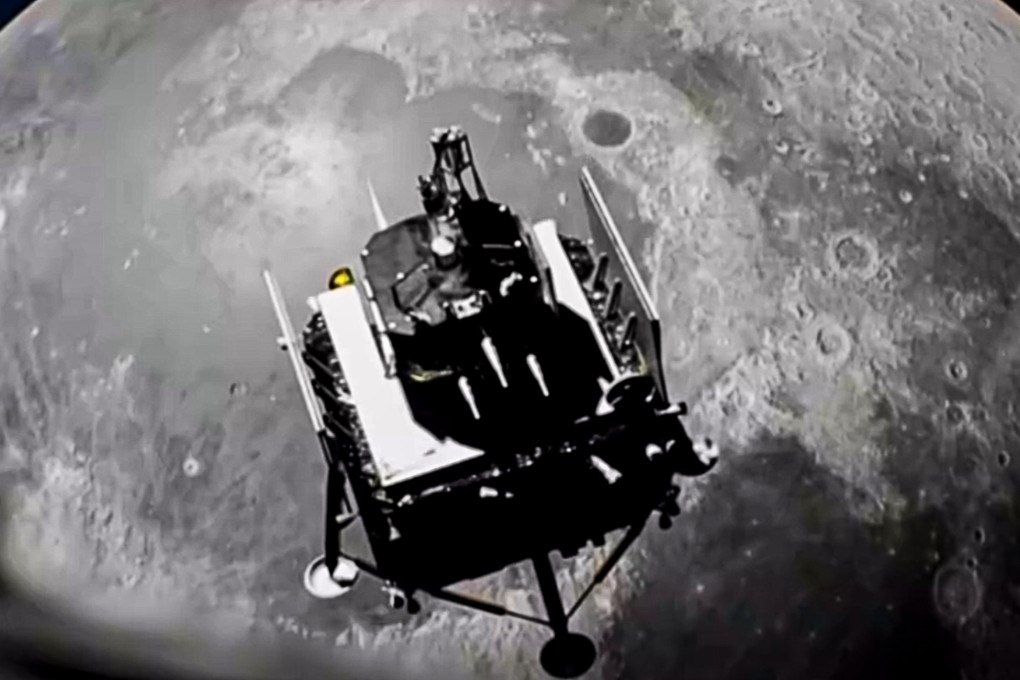China’s Chang’e-6 lander touches down on far side of moon on mission to bring rock samples back to Earth
- Probe lands on the South Pole-Aitken basin and will start collecting the first specimens from that area
- The previous Chinese mission surprised scientists by bringing back rocks that were much younger than those collected by previous US and Soviet missions

“At 6.23 am on June 2, with the support of Queqiao-2 relay satellite, the Chang’e-6 lander and ascender successfully landed in the pre-selected landing area in the South Pole-Aitken basin on the far side of the moon,” the CNSA said.
“The mission has made technological breakthroughs, including lunar retrograde orbit design and control technology. With the support of Queqiao-2, it will go on to complete key tasks such as the intelligent, rapid sampling from the lunar far side and lunar surface take-off.
“The payloads onboard the Chang’e-6 lander will work as planned, and carry out scientific exploration. The international instruments, including the Negative Ions at the Lunar Surface developed by the European Space Agency and the Detection of Outgassing RadoN from France, will switch on very soon. The Italian passive laser retro-reflector has also been deployed.”
The lander will soon go through initial checks and begin using its robotic arm to drill and scoop up materials from the lunar surface, which are expected to weigh up to 2kg (4.4 pounds).

